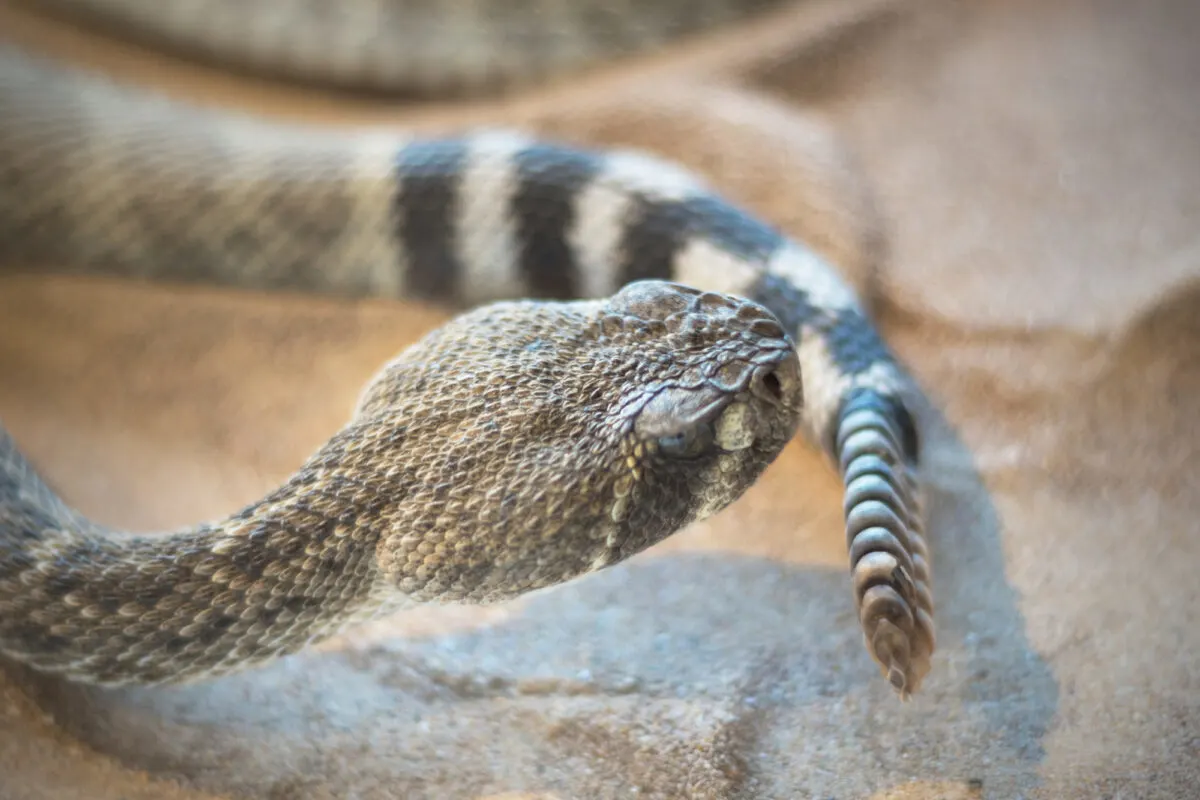The Western Rattlesnake is a species of venomous snake native to the state of Washington that many people don’t know exists. If you haven’t heard about it, you’re not alone – this sneaky serpent slithers through the woods without drawing too much attention.
But though they may be hard to spot, the dangers posed by these creatures can’t be overlooked. From their rattling sound and warning signs of danger to damage inflicted if bitten, let’s take a closer look at this remarkably adaptive animal and uncover some of its secrets!
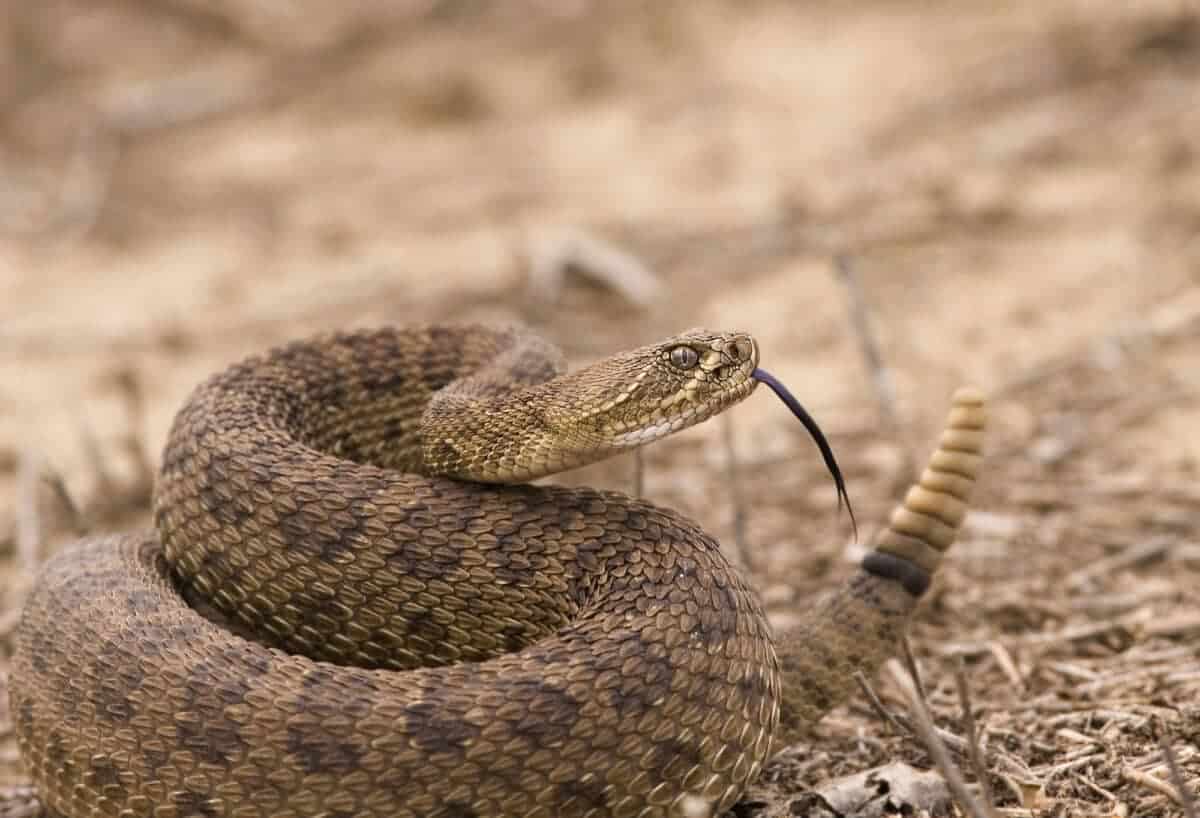
Slither ahead to any section below!
Introducing The Western Rattlesnake – What Makes It Unique, And Where Is It Found In Washington State?
The Western Rattlesnake is a fascinating creature found in select areas of Washington state. What sets this species apart from other snakes is, of course, its signature rattle. This rattling sound serves as a warning to potential predators and a reminder to keep a safe distance.
Additionally, the Western Rattlesnake boasts a unique heat-sensing pit between its eyes that helps it locate prey. Found in rocky terrain and open woodlands, this species is adapted to thrive in the arid regions of eastern Washington.
While it may not be the most beloved creature of the state, the Western Rattlesnake certainly deserves recognition for its remarkable features.
Understanding the Threat
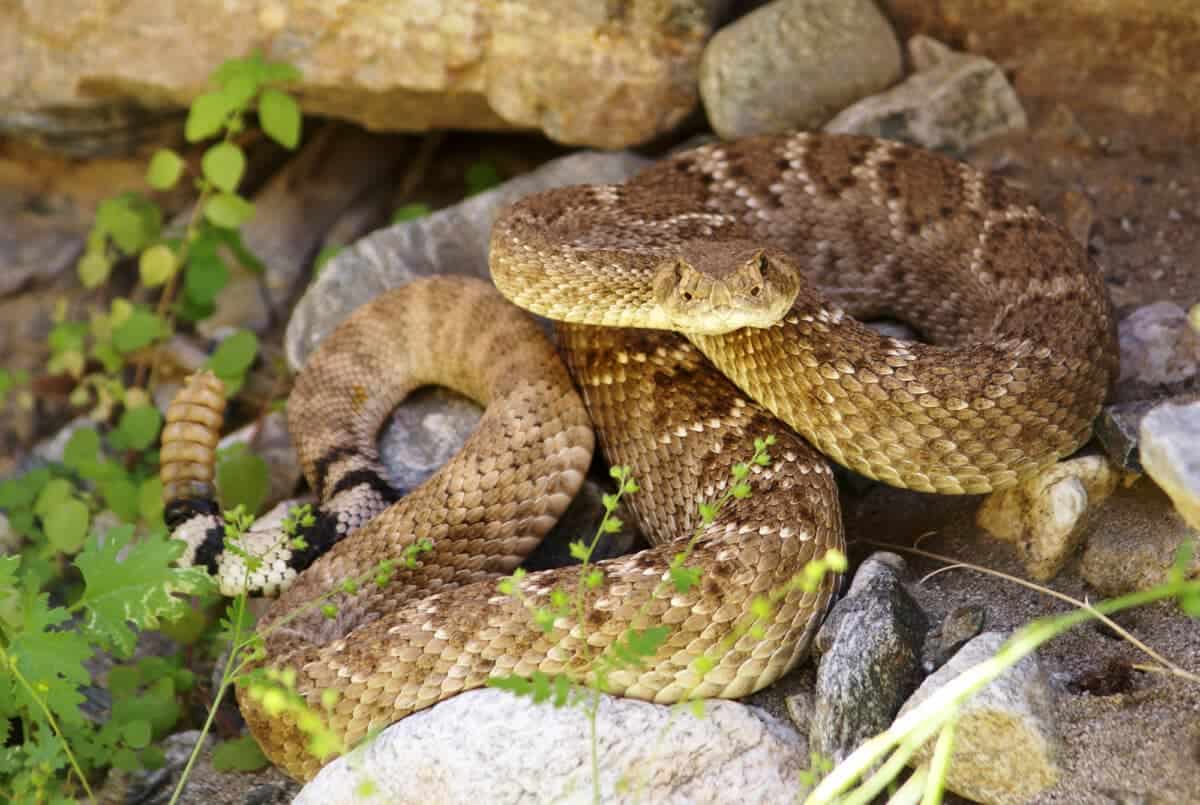
Let’s learn about the potential danger of a rattlesnake bite and how to avoid it.
Rattlesnakes are fascinating creatures, but encountering one in the wild can be dangerous. Their venomous bites can cause severe pain, swelling, and even damage to tissue and organs.
Understanding the potential threat of a rattlesnake bite and how to avoid it is essential. When in snake territory, watching for signs such as a rattling sound or a triangular-shaped head is crucial. Keep a safe distance, and never try to handle a rattlesnake.
Always wear thick, sturdy footwear and long pants when hiking or exploring areas where snakes may be present. Remember, prevention is critical when it comes to avoiding a rattlesnake bite.
Check out: Washington’s Unseen Danger: The Ticks and Lyme Disease.
Safety Tips for Avoiding a Rattlesnake Encounter
Rattlesnakes are a common sight during hiking or camping trips. While they prefer to avoid humans, their bites can be dangerous and fatal if not treated immediately. Following some safety tips is crucial to prevent encounters with these venomous snakes.
Firstly, always wear sturdy shoes and stay on designated hiking trails or paths. Avoid stepping over logs or rocks, where rattlesnakes often take shelter.
Additionally, refrain from touching or picking up any reptiles you encounter in the wild, no matter how harmless or familiar they may appear. If you spot a rattlesnake, give it a wide berth and slowly back away. Remember, prevention is the key to avoiding a snake bite and ensuring a safe journey on your outdoor adventure.
Identifying The Western Rattlesnake: Take A Closer Look At Its Physical Characteristics And Behaviors
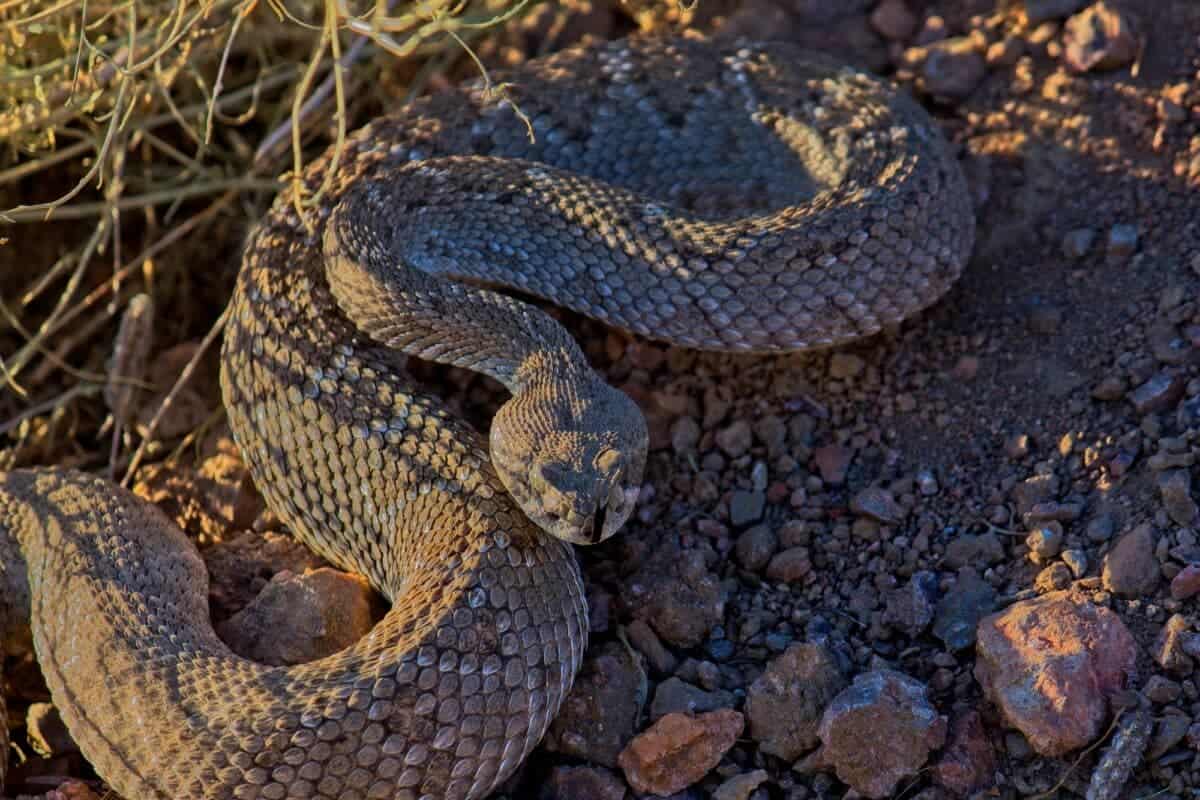
The Western Rattlesnake is one of North America’s most iconic and recognizable species of rattlesnakes, boasting a striking combination of physical characteristics and behaviors.
These snakes sport a triangular-shaped head, narrow neck, and a long, thick body covered in diamond-shaped scales. But perhaps their most distinctive feature is their rattles, located at the tip of their tail, which these snakes use to warn potential predators or threats.
Western Rattlesnakes are also known for their stealthy hunting techniques, waiting patiently and quietly for their prey to come within striking distance before ambushing them.
With their impressive physical traits and unique behaviors, these snakes are genuinely fascinating creatures worth a closer look at.
Check out: Black Rhinoceros.
Understanding Western Rattlesnake Habitat – Get An In-Depth Look At Where These Snakes Live And What They Need To Survive
The Western Rattlesnake is a fascinating species that has adapted to various habitats. Understanding where these snakes live and what they need to survive is vital for their conservation and our safety as humans.
These snakes are found in deserts, grasslands, woodlands, and mountainous terrain. They prefer areas with rocky outcroppings or underground burrows for shelter and basking spots to regulate their body temperature.
The Western Rattlesnake also depends on a steady supply of prey, such as rodents, birds, and lizards, which are all critical to survival. By delving deeper into their habitat requirements, we can better appreciate these elusive creatures and ensure their continued existence in the wild.
Check out: The Bloodhound.
Protecting Yourself And Your Home
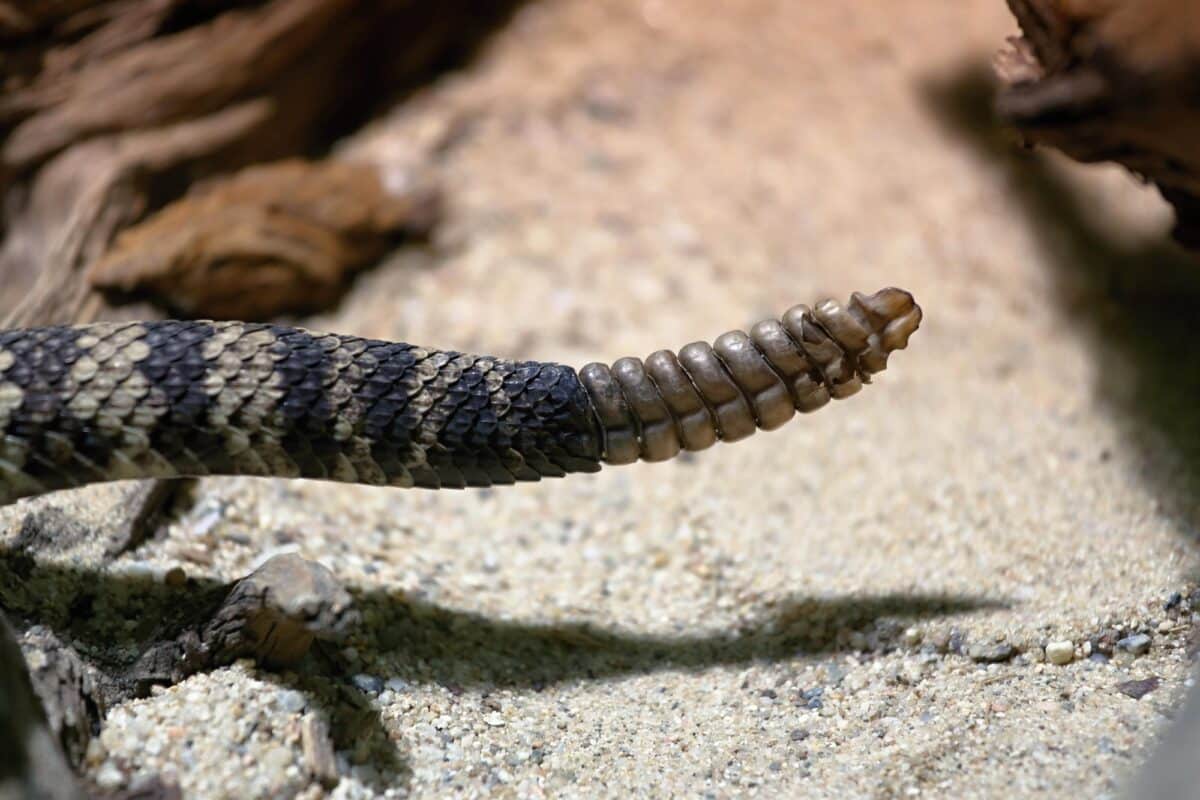
Let’s quickly explore ways to prevent rattlesnakes from entering your property and steps to take if you encounter one.
The thought of encountering a rattlesnake on your property can be frightening. But with the right precautions, you can prevent these venomous creatures from slithering into your home.
First, remove any potential hiding spots, such as debris or wood piles. Next, ensure any openings in your home’s foundation are sealed to keep the snakes out. If you come across a rattlesnake, it’s important to maintain a safe distance.
Avoid startling it or attempting to handle it yourself. Instead, contact a professional wildlife removal service to safely and humanely remove the snake from your property. With these steps in mind, you can rest assured that you’re taking the necessary precautions to protect yourself and your home from rattlesnakes.
The Future Of The Western Rattlesnake | Consider What Measures Are Being Taken To Ensure Their Survival In Washington State
The Western Rattlesnake is an iconic species that calls Washington state home. However, as human activity encroaches on their habitats, their numbers have dwindled significantly. To ensure their future survival, several measures are being taken by conservationists and state officials alike.
One of the most vital initiatives involves education and awareness campaigns to educate locals and visitors about preserving the snakes’ natural habitats.
Additionally, there are several protected areas throughout the state where the snakes can live and breed undisturbed. These efforts represent a crucial step towards ensuring that the Western Rattlesnake remains a thriving part of Washington’s diverse ecosystem for generations.
Interesting Facts About the Western Rattlesnake
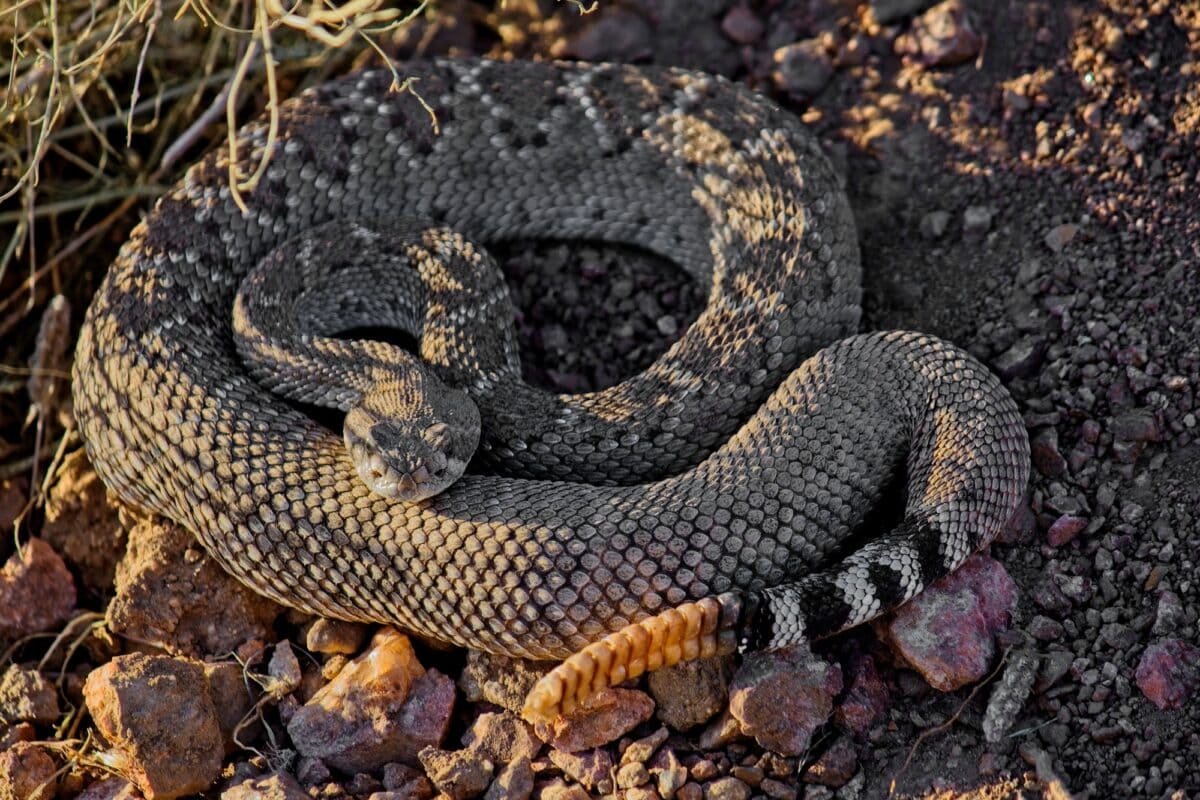
The Western Rattlesnake is a fascinating creature in various parts of North America. These snakes are known for their venomous bite, but did you know that not all Western Rattlesnakes are the same?
There are currently 11 recognized subspecies of Western Rattlesnake, each with unique characteristics and markings. Some subspecies, such as the Speckled Rattlesnake, are easily identified by their distinct black and white speckled pattern. In contrast, others, like the Prairie Rattlesnake, have a more muted coloration and smaller size.
Despite their differences, all Western Rattlesnakes play an essential role in their ecosystem. They help control the population of rodents and are also preyed upon by animals such as coyotes and birds of prey.
So next time you spot a Western Rattlesnake in the wild, take a moment to appreciate this incredible creature and all that it does for its environment.
Key Points
| The Western Rattlesnake is a species of venomous snake native to the state of Washington that many people don’t know exists. |
| What sets this species apart from other snakes is, of course, its signature rattle. This rattling sound serves as a warning to potential predators and a reminder to keep a safe distance. |
| Rattlesnakes are a common sight during hiking or camping trips. While they prefer to avoid humans, their bites can be dangerous and fatal if not treated immediately. |
| These snakes sport a triangular-shaped head, narrow neck, and a long, thick body covered in diamond-shaped scales. |
| Western Rattlesnakes are also known for their stealthy hunting techniques, waiting patiently and quietly for their prey to come within striking distance before ambushing them. |
The Final Take
From the diverse and unique information discussed above, it’s clear that the Western rattlesnake is not something to be feared. Instead, it should be respected and appreciated for its importance in Washington State’s natural ecosystems.
Regardless of your opinion about snakes, educating yourself on identifying this species accurately and taking basic precautions if you find yourself in their presence is essential. By fostering an understanding of this species, we can begin to protect it from any potential harm better.
Despite its venomous snake reputation, the Western rattlesnake has a long history of being misjudged or misunderstood. With more knowledge of this reptile, we can ultimately respect and admire its significance and beauty in an otherwise populated environment.
Thanks for reading along! For more, check out our related article links below.
Next up:
- Discover San Francisco’s Most Dangerous Animals
- Unearth the Reality of Florida’s Venomous Spiders
- Great White Shark Vs. Bull Shark
- Michael Phelps Vs. Dolphin: A Race For Aquatic Supremacy
- Eagle’s Aerial Acrobatics: The Hawk Becomes The Hunted
- Dwayne “The Rock” Johnson Vs. Silverback Gorilla - October 20, 2024
- Bear Cubs Rescued from Huge 70ft Tree in British Colombia - October 20, 2024
- Brave Cat Saves Chicken From Mischievous Fox - October 20, 2024

